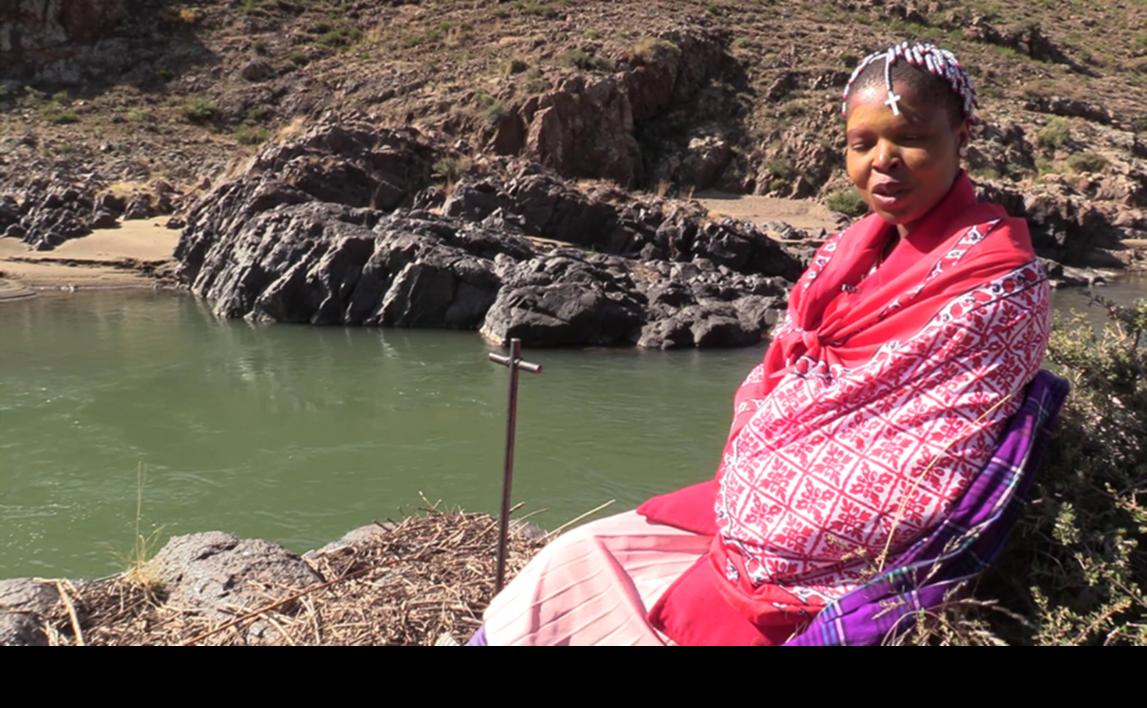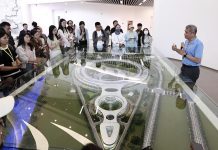Africa-Press – Lesotho. Safeguarding Basotho cultural heritage and equipping young archaeologists with technical skills in finding and documenting cultural assets is at the core of Phase II of the Lesotho Highlands Water Project’s cultural heritage programme.
The ongoing archaeological studies at the Phase II project area have to date revealed ceramic fragments, woodlot scrapers, fish bones, conus/cone shells, ostrich egg shells, tooth pendants and other remains.
Artefacts and remains have been excavated and curated at 16 of the Stone Age sites excavated up to the coronavirus lock down since the inception of the studies in May 2018. These remains provide valuable insights into the prehistory of this area.
Some remains like conus shells show that there were interactions between Basotho and people from the coast, the closest coastal region being Durban, while others may indicate the time of those interactions.
“For years people may have believed that the Lesotho highlands with its harsh weather conditions and hard to reach terrain was an inhospitable place to live, but the remains we have discovered may indicate that the highlands was a place that others called home long before the battles which forced people to live in hidden areas.
However, more research and specialist analysis have to be undertaken to get a clear picture of who lived in Polihali and their behavioural patterns and livelihoods,” states Len van Schalkwyk, PGS Heritage consultant.
Historic discoveries include rock art which has been recorded in 13 sites on the Senqu and Khubelu rivers. These include paintings of spears, eland, humans on horseback, cattle and other images.
Rock art is universally accepted as a cultural expression which provides insights into the worldview of its makers. “Working in Polihali has been an exciting and fulfilling experience. The art we have discovered is evidence that the Senqu and its tributaries was an important area for the hunter- gatherers.
Polihali Dam 19th century rock art also shows the area was accessed by the Amatola cattle raiders who are known to have lived in the eastern Lesotho highlands and elsewhere in the Maloti Drakensberg.
We also found other traces of art which may date back to over 2000 B. P. ” Dr Jeremy Hollman, rock art specialist, confirms these findings. Other heritage resources which form part of the Polihali history have also been recorded.
These include caves, the Royal Batlokoa graveyard, sacred pools, protection stones, medicinal plants and intangibles like the belief system, dances and cultural practices, which have also been documented.
PGS Heritage was appointed by the Lesotho Highlands Development Authority in October 2017 to develop and implement the Phase II cultural heritage plan.
The major components of this task include identifying and recording the tangible and intangible cultural aspects of the Basotho to be affected by the Project; recording and documenting the rock art and developing an action plan to be implemented to protect and preserve the cultural heritage finds.
Findings from every site with historic significance will be documented to form part of the rich Basotho culture to enhance tourism or to be archived for posterity.
“We are very proud of the work that is being done under this component of Phase II which presents a variety of opportunities.
There is a possibility to partner with the local communities in preserving the cultural resources and using them to improve livelihoods. This component also presents a great opportunity for skills development for upcoming archaeologists.
We are giving young archaeologists from Lesotho and farther afield a chance to gain hands on experience in archaeology,” confirms Tente Tente, LHDA CE.
Nthabeleng Rantsó, a National University of Lesotho (NUL) graduate who intends to pursue a master’s degree in Paleolithic Archaeology, is one of the six students who participated in an internship programme with PGS Heritage, in September 2019.
“I participated in this internship because it is closely linked to my career as we were excavating a Stone Age site.
I learned how to identify stone tools and bone points and gained new excavation skills and archaeology site techniques different from those used on national and international sites where I have previously worked such as recording the cave shelter and a different way of cataloguing artefacts.
The internship was an important step to achieving my goal as I also decided on my master’s research topic with the help of the cultural heritage consultant’s team.
” One of the international students who participated in the programme is studying BA Archaeology and Anthropology at Oxford University in England.
Tom Wates, who had never been to Lesotho, found himself living in Mokhotlong for three weeks to fulfill the compulsory requirements of field work for his studies.
Being in a foreign country may have dissuaded other young people but Tom found the experience exciting. “Although the principal aim of the trip was archaeological, I feel that the experience has benefited me in both facets of my degree.
Archaeologically, the first-hand experience excavating rock shelters in this area will help me enormously in my Archaeology of Southern African Hunter Gatherers module I am undertaking this coming year, providing an excellent point of reference from which to base the new information I will learn.
Secondly, living for a prolonged time period with completely new people from a different cultural background, and integrating with local Basotho herds’ people and farmers, has expanded my scope for anthropological thought.
”
The students were exposed to many of the specialised techniques used in archaeology excavations including: spit recovery, elevation control, site recording and drawing of exposed features, excavation square profiles, site mapping and cataloguing of finds in the field.
“Students acquired hands-on experience in the rescue excavation of two Later Stone Age (LSA) shelter sites due to be inundated by the proposed Polihali Dam on the Senqu River.
They were active participants in the numerous discussions around the local environment, both social and biophysical, the nature of LSA life ways and the historical interaction of hunter-gathers with sedentary farming communities.
We wish them well in their future archaeological endeavours,” Len van Schalkwyk, excavations team leader, states. Gil Thornton who is also studying BA Archaeology and Anthropology at Oxford had just completed his first year and wanted to get a deeper understanding of archaeology.
“The programme offered the opportunity of learning about the subject outside of the classroom and actively engaging in the process.
Before this project I had minimal exposure to excavation. During my time in Mokhotlong I learnt how to efficiently excavate, sort and record the data found.
My teamwork and communication skills were also improved because I was working with new people for the first time, both the field crew and students from Lesotho University, which I thoroughly enjoyed.
” Heritage is a source of identity inherited from the past and preserved for future generations.
For the LHDA, undertaking the cultural heritage studies, finding and documenting cultural resources to preserve them for Lesotho, is not a ‘nice to have’. It – and the opportunity to inspire young archeologists – is fundamental to the implementation of Phase II.
For More News And Analysis About Lesotho Follow Africa-Press






